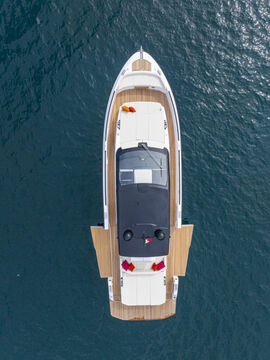
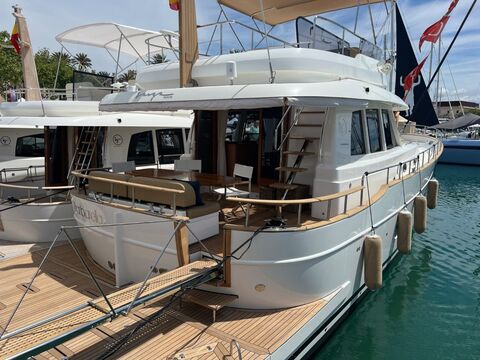
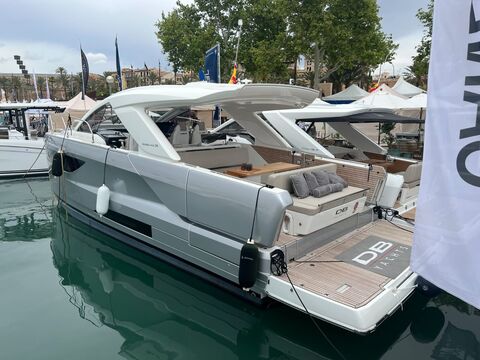
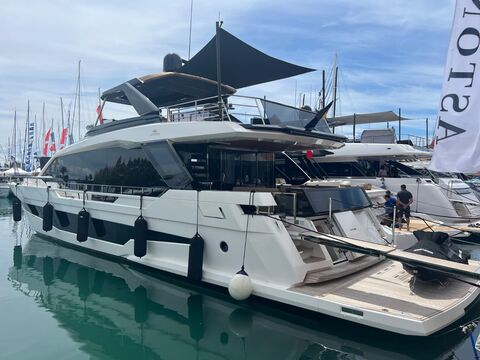
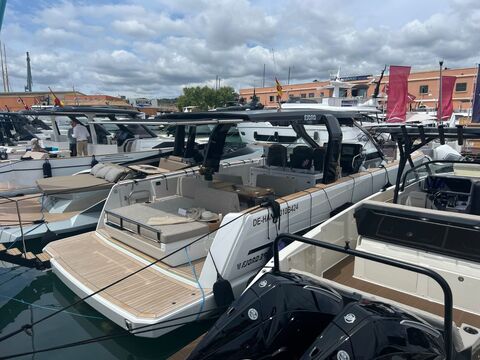
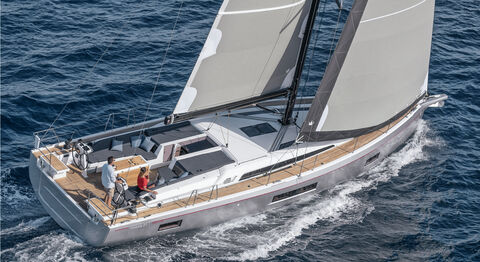
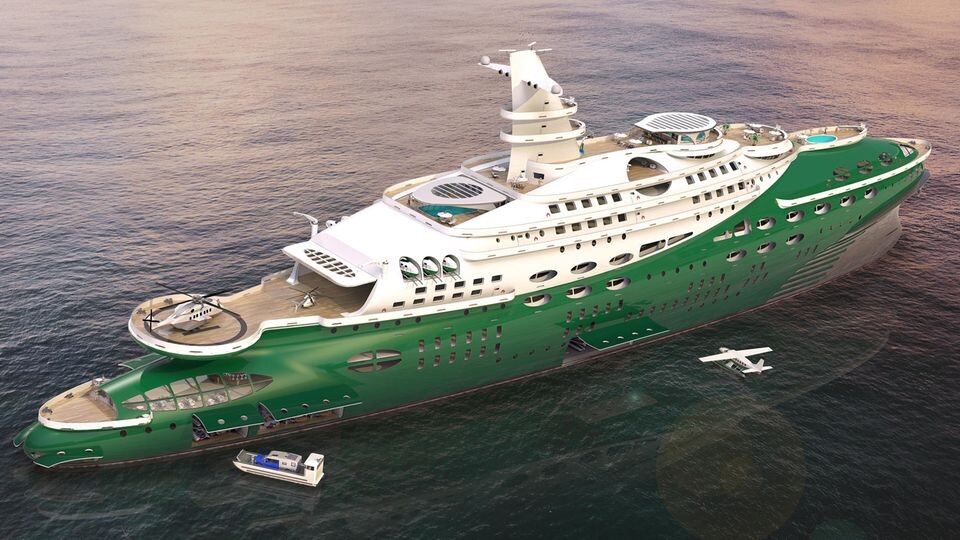
26. January 2024
Visits: 1.013
Don't mess around, go big!
This yacht design by American designer Steve Kozloff surpasses everything that has gone before many times over. It could become the largest private yacht ever built. The floating supership is said to cost a whopping 1 billion US dollars. The yacht has space for several aircraft, 2 helicopters, several dinghies, a clinic and a submarine.
20,000 horsepower will plow through the waves
Powered by 4 propeller nacelles with a total of 20,000 horsepower. The maximum speed is specified as 20 knots (37 km/h). According to Kozloff, the range should be 37,000 km (20,000 nautical miles). For comparison: a circumnavigation of the earth is approx. 40,000 km.
Gigantomania for a good cause ?
With his "G-Quest", Californian yacht designer Steve Kozloff presents a vessel which, if realized, would break all records in private yachting in one fell swoop. The design envisages the yacht having a length of 215 meters - a whole 35 meters more than the world's longest yacht, the "Azzam". The supposedly noble project is intended to underline the planned equipment of the yacht: the design envisages 12 decks. 3 decks will be used for the well-being of the owner and his guests, while the remaining 9 decks will be fully equipped for research and medicine. There are also plans to install several research stations and laboratories for experiments with sustainable propulsion systems and fuels. A 20-bed hospital is also part of the plans.
Year-round self-sufficient living on the water
On board, a solarium, several pools, a 300-square-meter apartment, a basketball court and a beach bar will provide plenty of variety. In order to be able to maintain operations at anchor in an environmentally friendly manner, generators are to be designed for wave energy. This would mean that the "G-Quest" would not be completely dependent on the continuous operation of the engines. The project, which would cost up to 1.2 billion US dollars, has not yet been implemented.
Fotos Copyright by Steve Kozloff
Leave a comment